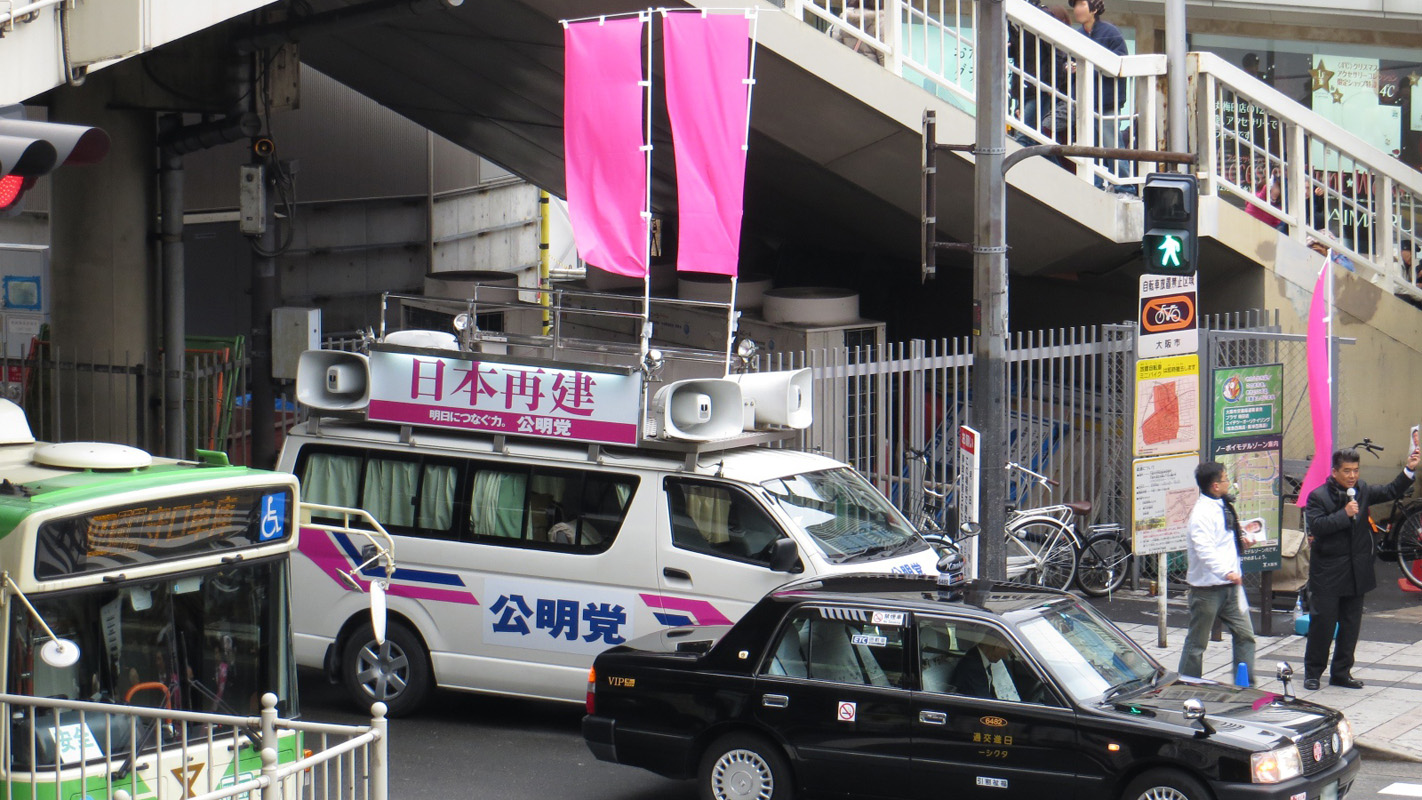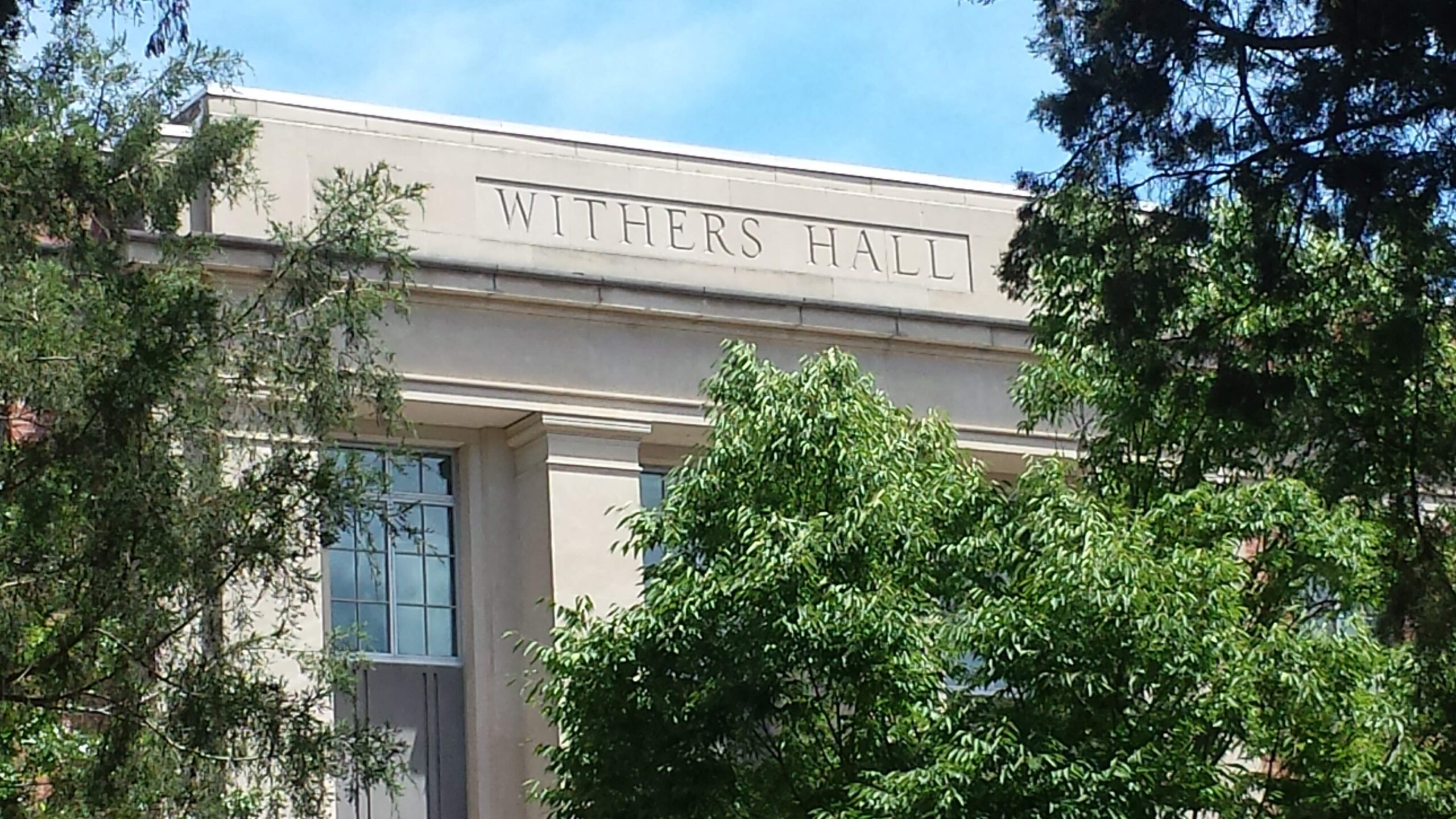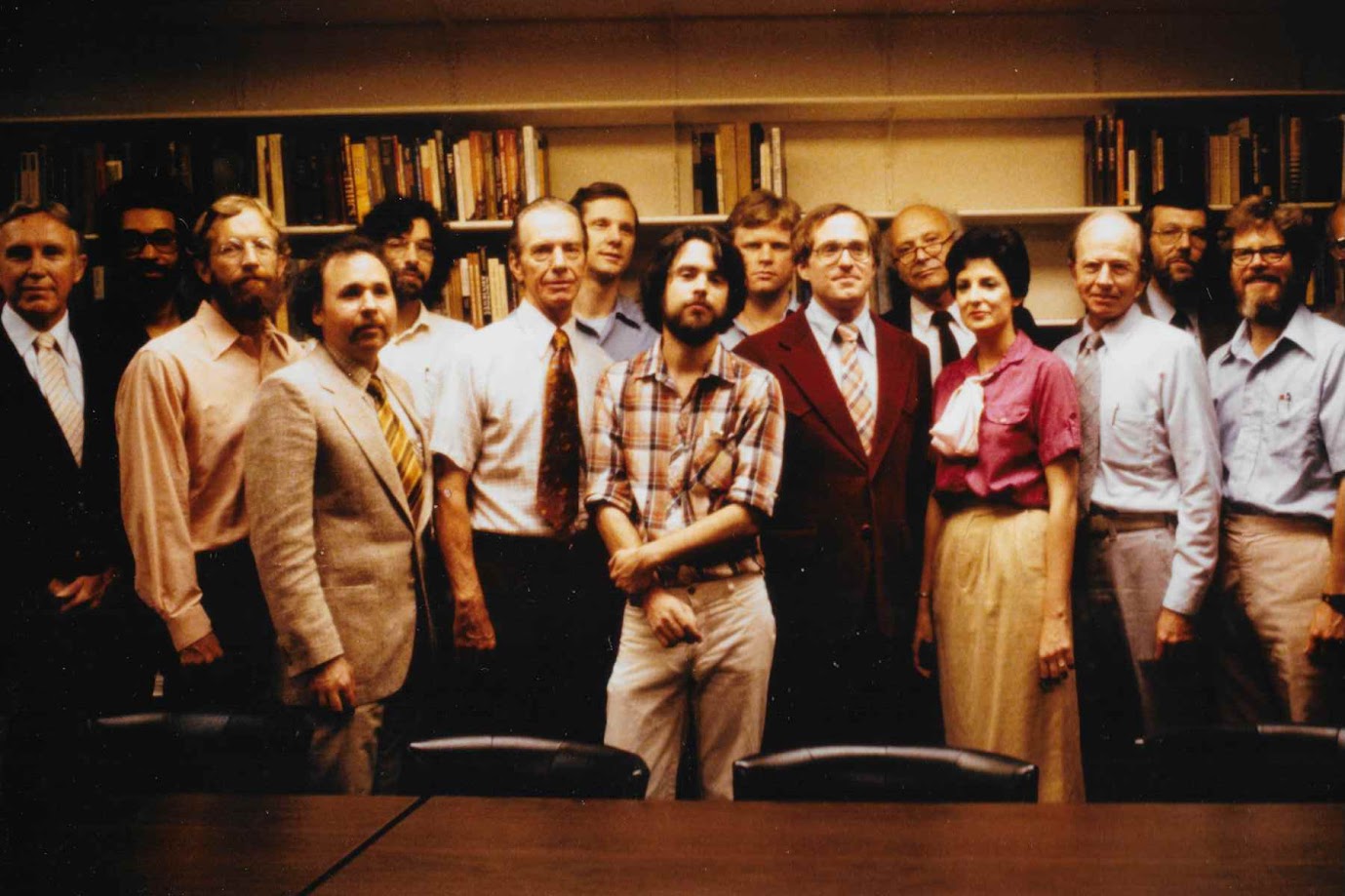Religion and Politics in Japan: A Conversation With Religion Scholar Levi McLaughlin

Shinzo Abe’s Liberal Democratic Party won an emphatic victory in Japan’s national elections Dec. 14, returning him to the Prime Minister’s seat. He is now claiming a mandate for his economic policies – which could have ramifications for the U.S. One of the people watching Japan’s elections is Levi McLaughlin, the co-author and co-editor of a new book on Japanese religion and politics and an assistant professor of religious studies at NC State. McLaughlin’s research has focused on links between a prominent Japanese religious organization and Abe’s Liberal Democratic Party.
We recently decided to do a Q&A with McLaughlin to learn more about what drew him to religious studies, and what he can tell us about Japanese religion and politics.
The Abstract: What’s your research background? What drew you to studying Asian religions, and Japanese religions in particular?
Levi McLaughlin: I received my Ph.D. in religion from Princeton University in 2009, but this came about after a circuitous route through other educational experiences. When I was a teenager in Toronto in the 1980s, I trained intensely in classical music, spending upwards of four or five hours a day practicing violin and piano. At the age of eighteen, just as I entered undergraduate studies at the University of Toronto in the early ’90s, I decided somewhat abruptly to switch away from professional training in music toward the academic study of Japan. Music remained an integral part of my life, particularly the violin, but I majored in Japanese Studies at U of T, and I was lucky enough to spend my third year in Japan as an exchange student at Kwansei Gakuin University in Nishinomiya, a school I’m delighted to learn also enjoys an exchange relationship with NC State. I completed a Master’s of Arts in East Asian Studies at the University of Toronto right after my B.A., and I also took classes in religious studies, and then I returned to Japan for another year, this time to teach English at a middle school in Osaka.

This disconnect drew my interest. As a foreigner newly arrived in Japan, I was in a paradoxically advantageous position to learn about the elephant in the room, this contemporary “religion” taboo I was told was difficult or impossible to research by people with deep-rooted Japanese social ties. The one religion that for decades had drawn tabloid attention and remained glaringly absent in scholarly accounts was a Buddhism-based organization called Soka Gakkai, the “Value Creation Study Association,” a truly massive lay group that began as an educational reform movement in the 1930s and grew in the postwar decades into the largest collective of active religious participants in Japan’s history. The organization is famous for its hard-sell approach to proselytizing, the reverence its members maintain for its Honorary President Ikeda Daisaku (1928- ), its exclusive beliefs that alienate other religions, and for its relationship with Komeito, the “Clean Government Party,” a political party that now holds an influential position within Japan’s ruling coalition. Soka Gakkai hangs over Japan’s religious landscape, and it shapes many other fields, but it remains woefully under-researched.
So I decided to spend years researching the organization.
In 2000, I was fortunate to receive a fellowship from the Japanese government that allowed me to begin study as a graduate student at the University of Tokyo, where I worked under Shimazono Susumu, Japan’s pre-eminent scholar of modern and contemporary religion. I began ethnographic fieldwork with grassroots-level members of Soka Gakkai.
When you do fieldwork, you have to begin by using whatever tools are available to you. My background in music allowed me to join a Soka Gakkai symphony orchestra in Tokyo – one of several that the organization maintained, just in the Tokyo region – as I began learning about the lives of Gakkai adherents and the organization’s history, doctrine, practice, social life, and other dimensions. From 2002, I was hired as a research assistant and translator at Kokugakuin University in Tokyo, one of only two schools in Japan that trains Shinto priests. Through this, I expanded my study of Japanese religion beyond Buddhism into Shinto history and practice as I continued my work on Soka Gakkai.
I moved to the United States in 2004, when I was accepted to the Ph.D. program at Princeton. There I was based in the Department of Religion, and I delved into rigorous study of theory and methodology in religious studies, in addition to work on religion in Japan and China. I also received training in anthropology and history, and I spent significant amounts of time in Japan and Germany studying language and continuing my fieldwork. Since completing my Ph.D., I’ve been able to continue expanding the scope of my research, geographically and disciplinarily.
Before I came to NC State in the fall of 2012, I taught religion at Wofford College in South Carolina and anthropology at the University of Iowa as a postdoctoral researcher in Asian and Pacific studies. A couple of years ago I began researching and publishing on religious responses to the compound earthquake, tsunami and nuclear disasters of March 2011 in northeastern Japan, and I have released a number of articles on this issue, some in collaboration with scholars and practitioners working in development, relief work, and Southeast Asian studies.
In 2011, I was also a visiting researcher at the Asia Research Institute, National University of Singapore, where I was able to carry out concentrated work on a comparatively new interest of mine – the connection between religion and politics in contemporary Asia.
TA: When and why did you decide to focus on the intersection of religion and politics in Japan?
McLaughlin: One of the most significant aspects of Soka Gakkai, and one of the reasons it numbers among Japan’s most controversial religious groups, is its presence in electoral politics. Soka Gakkai began fielding independent candidates in Japanese elections from 1955, and it founded Komeito in 1964, at that time with the express purpose of realizing Buddhist doctrinal objectives. Komeito and Soka Gakkai separated officially in 1970, and both the religion and the political party have abandoned political aspirations driven by these foundational Buddhist mandates. But generations of Gakkai adherents have continued to mobilize for Komeito candidates, and members treat electioneering on Komeito’s behalf – and now on behalf of Komeito’s coalition partner, Japan’s Liberal Democratic Party – as a religious duty as important as chanting Buddhist scripture or carrying out conversions. Gakkai members’ convention of treating electoral campaigns as part of their faith-driven mission evokes hostile reactions from its opponents, who accuse Soka Gakkai of violating Japan’s constitutionally guaranteed separation of religion and politics (though the same constitution guarantees freedom of association and expression).

I realized that, in order to do justice to this central political feature of Soka Gakkai life, and in order to understand how both Soka Gakkai and Komeito operated, I needed to begin learning about politics in Japan. Not just politics as an outgrowth of religious commitment, but politics as politics – how parties work, how they select candidates, how they formulate policy, and how they operate in opposition and in coalition.
From 2009, I began conversations with an exciting group of political scientists who came together from across the United States, Germany, and Japan to pursue their interest in researching Komeito. In the same way that Soka Gakkai has eluded sustained research in religious studies, so too has Komeito remained under-studied in political science, despite its longevity and influence on Japanese politics. This Komeito-focused group has come to include eight political scientists and one religious studies scholar – myself. Between 2010 and the present, we have collaborated in Japan on fieldwork observations of Komeito elections, archival study of the party, and data analysis in order to understand how the party functions.
Our work promises to be relevant to anyone who is interested in the intersection of religion and politics in democracy, particularly those who are looking for examples beyond the Christian and Muslim case studies that tend to dominate the field. And because we are non-member researchers who have spent extended periods of time carrying out ethnography, interviewing influential Komeito politicians, and analyzing heretofore unexamined data, our studies comprise exciting additions to impartial inquiry into contemporary politics/religion issues.
TA: You have a new book out, Komeito: Politics and Religion in Japan. Do you think religion influenced the recent election in Japan?
McLaughlin: Komeito: Politics and Religion in Japan was just released by the Institute of East Asian Studies, University of California at Berkeley in November 2014. I co-edited the volume with George Ehrhardt (Appalachian State University), Axel Klein (Duisburg-Essen, Germany) and Steven R. Reed (Chuo University, Japan), and our authors include the editors along with scholars based at Harvard University, the University of Vermont, and other schools.
The relevance of our research has been proven by the Dec. 14, 2014 general election in Japan. The Liberal Democratic Party has just swept into a super-majority in the Japanese parliament along with its coalition partner Komeito. It is evident that this crushing victory can be credited in no small part to Komeito and its Soka Gakkai member voters.
To understand this most recent electoral success, and to understand other pivotal moments in Japanese democracy since the 1950s, readers should consult our book. Komeito: Politics and Religion in Japantraces Komeito’s origins in Soka Gakkai and its development into a normal political party – that is, a conventional operator in the Japanese parliamentary system, only one that is supported by a distinctive voter base. We shed light on the party’s policy positions, how it raises funds, how it selects candidates, who its main opponents are and how they strategize against one another, along with other topics. Readers looking for an introduction to these issues can begin with a recent op-ed by myself, Axel Klein, and Steven Reed that’s hosted by the Wilson Center in Washington, D.C.
TA: Are there particular issues you’ll be tracking to determine how Soka Gakkai’s role may be changing? What will you be working on next?
McLaughlin: I am completing a single-author book manuscript titled Soka Gakkai: Buddhism and Romantic Heroism in Modern Japan. This book draws primarily on my fieldwork within Soka Gakkai in Japan – now almost a decade and a half spent as a non-member participant within the group, which is the longest period any non-adherent researcher has spent within grassroots-level Soka Gakkai life, from what I understand. In the book I investigate reasons why Soka Gakkai grew into Japan’s largest-ever religious organization in the decades immediately following the Second World War, and I bring to life the experiences of ordinary members who make up the organization. I do this by paying particular attention to Soka Gakkai’s conflation of prophetic medieval Japanese Buddhism with its origins as a gakkai, a “study association,” whose modern pedagogical norms and promise of legitimacy through academic achievement appealed to millions of marginalized people. Through interviews with veteran members, accounts of intensive doctrinal study with Gakkai youth, chronicles of musical training with the Soka Gakkai symphony orchestra, and analysis of historical documents, I explain why Soka Gakkai exploded into a mass movement and reveal some of the dilemmas it now faces as it seeks to appeal to its 21st century youth – a generation distanced from the deprivations and aspirations that drove Soka Gakkai’s rapid growth.
Soka Gakkai, like Japan itself, is changing rapidly. I believe that my book will serve as a window into some of contemporary Japan’s underlying dilemmas and anxieties as it accounts for the rise of its largest-ever religious organization.


